This is what it would look like. These innovations not just demonstrate brilliance in science and technology but also a social spin and street-smart attitude
Janani Gopalakrishnan Vikram
Innovations of a year are worth watching not because they speak of the year gone by, but because they indicate what is in store in the coming year. That is what we had in mind when we chose this set of marvellous innovations from year 2012, which range from motion-activated screwdrivers and 3D printers to social hearing-aids and self-regulating tyres. These innovations demonstrate not just brain power but also street-smart attitude—and they promise to fulfil long harboured desires of not just high-end consumers and techies but common people as well.
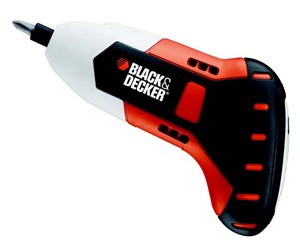
World’s first motion-activated screwdriver
Black & Decker has used simple electronics to create a niche product. The 4V Max Gyro is a rechargeable motion-sensing screwdriver that can be controlled by your wrist movement. The device senses the movement of your wrists and uses that as a clue to adjust direction and speed of drilling. You need to rotate your wrist just one quarter turn to the right for forward, or left for reverse.
Inside: Its Invense ISZ-650 Z-axis integrated micro-electromechanical-system (MEMS) gyroscope designed for high performance, robustness and high shock resistance. MEMS technology makes it small enough for a compact screwdriver. Light-emitting diode (LED) lights are used to illuminate the workspace; plus an effective lithium-ion battery ensures that the device remains charged for as long as one-and-a-half year.
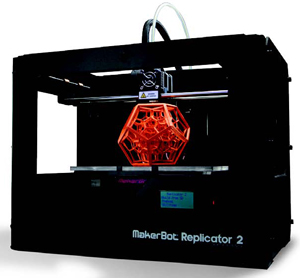
A factory in your garage
The MakerBot Replicator 2 is a compact desktop device that lets you print 3D objects. It works using Fused Filament Fabrication (FFF) technology. Basically, it melts plastic and squeezes it through an extruder to build an object layer-by-layer. Replicator 2 uses polylactide filament—a super-strong renewable plastic that can be used to make even movable parts and complex assemblies. The device allows print dimensions of 28.5×15.3×15.5 cm3, with a path-breaking 100-micron resolution ensuring smooth surfaces and fine features.
Inside: It uses modified version of Mighty Board— MakerBot’s original 3D printer control technology—that can control up to five stepper motors with BotStep stepper controllers, two extruders (with heater cartridges, safety thermostats, thermocouples and fans), Replicator interface board and heated build platform, apart from connecting up to six end-stops. The extruder is nearly identical to the original Replicator extruder with minor tweaks to optimise manufacturing of injection moulded parts. Other features include 3-point levelling system and 32 per cent lower power consumption.
While the original Replicator design was completely open, there is a lot of furore about the company moving to a closed model now. However, the founder claims that the core technology comprising the extruder and the control board are still open. Original component information is available at http://www.makerbot.com/blog/tag/mightyboard
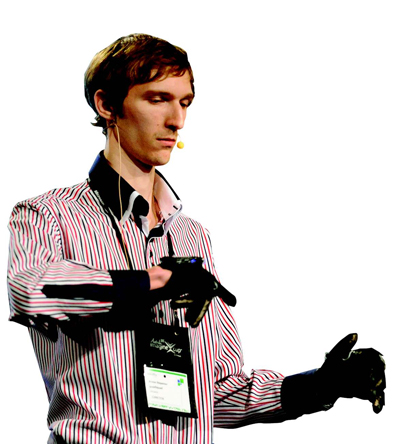
Translating sign language into speech
Not everybody can understand sign language – this is a practical difficulty that hearing and speech impaired people face everyday. Four students from Ukraine have developed a simple and inexpensive solution called Enable Talk comprising special gloves and a mobile application, which can detect signs made by the user wearing the gloves, and convert these into text or speech on the phone. Working on the user feedback, they are now enhancing the system to also track arm movement in addition to just fingered signs.
Inside: Eleven flex sensors and eight touch sensors embedded in the glove convert movement into proportionate electrical resistance. The glove also includes 3D digital linear acceleration sensor, magnetic sensor, accelerometer and gyroscope. An Atmel XMEGA A3 microcontroller processes analogue signals from sensors and transmits the resulting data to a mobile using Class 2 Bluetooth module (BlueCore4-Exteanl chipset from Cambridge Silicon Radio). The glove is powered by a 750mAh lithium-polymer accumulator, which can be charged through USB or built-in solar battery.
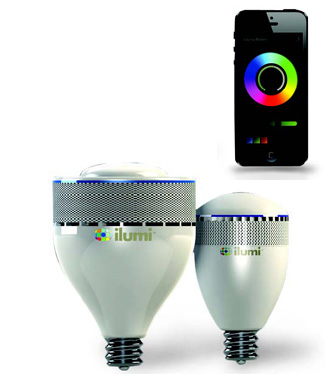
Easy and intelligent LED bulbs
You can control these light-emitting diode (LED) bulbs with your mobile phone – and no, we are not talking of complex building-wide lighting solutions. iLumi is a simple LED-based bulb that can be screwed into any common socket. It is available in small, large, white and full-spectrum models, which are supposedly super energy-efficient, last up to 20 years, and can be controlled with a simple mobile application. You can schedule the light, alter its brightness of hue, motion-activate it, and do much more. Founders Corey Egan and Swapnil Bora are waiting to finalise the design and manufacture the bulbs, which have already won numerous awards.
Inside: iLumi’s HyperLux technology allows it to be programmed to display millions of colours and makes it one of the brightest bulbs around. The bulb, which is compatible with normal sockets and power supply, includes Bluetooth, 16-bit, 256kB flash processor, additional 4-megabit flash memory, real-time lighting control for up to 100 iLumi bulbs, and clock with battery back-up. The control application is simple and intuitive, and can be downloaded and run on Android and iOS devices. The company plans to include a software developer kit (SDK), to come up with innovative ways for programming and controlling the bulb.
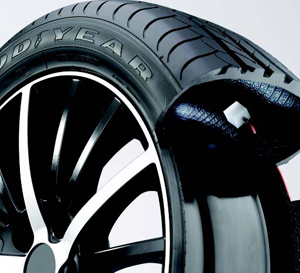
Tyres that pump themselves up
An under-inflated tyre can reduce mileage, increase wear-and-tear and even burst. However, during long journeys, when tyres are likely to wear out quickly, drivers are in no mood to monitor their tyre pressure. As a brilliant alternative, Goodyear has come up with a self-regulating tyre that inflates itself on-the-go. The electronics and mechanical components are built into the tyre itself, and the technology is currently being used on 100-psi, re-treaded commercial usage tyres.
Inside: Goodyear’s Air Maintenance Technology focuses on an internal regulator comprising pressure sensors and miniature pump, completely fitted inside the tyre itself. The power for regulator functioning is drawn from the movement of the tyres. Working is simple: A sensor on the interior detects when the pressure goes low. Immediately a valve mounted on the sidewall opens up. As the tyre rotates, the vehicle’s weight compresses a tube built into the tyre’s circumference to inject air into the tyre. Once the pressure reaches the programmed psi value, the system shuts the valve and the tyre runs as usual.
A social hearing-aid that imitates functional hearing
People using hearing-aids are often embarrassed by the lack of clarity in crowded places. Two researchers at the University of Toronto have floated a start-up called Cogni-Wave to achieve what they call ‘social hearing.’ Cogni-Wave is developing a hearing-aid that uses rotating microphones to filter environmental sounds, so that the person using the hearing-aid hears exactly like someone with functional hearing—one voice at a time.
“We have a prototype that utilises Bluetooth and radio frequency (RF) wireless microphones or headphones. We have had good results but we are still adjusting parameters and the system to optimise performance. We are implementing our algorithm onto hardware, that is, chips and circuits, to speed up the processing and better incorporate it into various forms of hearing enhancement devices,” says Brian Wang, co-founder, Cogni-Wave. These hearing-aids will hopefully hit the markets by the end of 2013.
Inside: Michael Shen, co-founder, Cogni-Wave, says, “We will use digital signal processor (DSP) chips for the core signal processing of our device; the specifics of the chips would match our algorithm parameters to achieve desired results. Directional microphone and miniaturised speakers are necessary for our design, along with the circuitry components needed to amplify or filter the received and outgoing signals.”
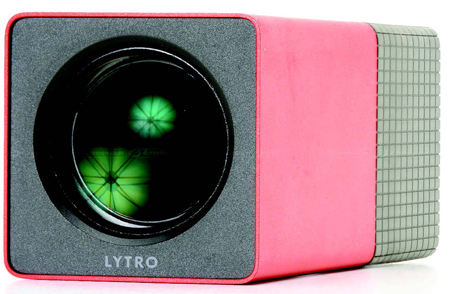
A camera that takes ‘living’ pictures
Lytro is the first consumer camera that captures the entire light field – that is, the rays of light travelling in every direction through a scene. Earlier, this used to be done in labs with hundreds of cameras and a supercomputer to collate the images. The scientists who made Lytro have combined all that technology into one small handy camera! This means you can take ‘living’ pictures that you can interactively refocus later, any number of times. There is a special format and software bundle that let you do a lot of things with your living pictures, and also share them with others.
Inside: Lytro’s 8X optical-zoom, f/2 lens captures significantly more light than most cameras. A micro-lens array joined to a digital image sensor records the colour, intensity and direction of the 11 million or so light rays entering the camera. Their light field engine does the work of a super-computer, by processing all the light ray information and creating images that can be refocused anywhere, anytime. Since the engine travels with every file, others can also refocus shared images. The camera comes in a lightweight anodised aluminium structure with a touch screen.
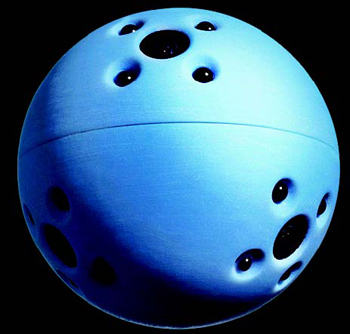
A bouncy tool for police encounters
When scouting out suspects, police and military personnel always fear the unknown—how many criminals are inside a room, whether they have any dangerous weapons with them and so on. Similarly, firefighters would like to know how intense a fire is, how many people are stuck in the accident, etc. Bounce Imaging, a throwable electronic device, aims to help in such situations by capturing images and other information using cameras and sensors, and relaying it to a mobile device.
Inside: Still in the design stage, Bounce Imaging is likely to include six wide-angle cameras (that can together give a 360-degree view), each capable of taking two snaps per second and surrounded by infrared LED flash, a protective casing that allows the device to bounce without any breakage of components, a battery, a variety of sensors such as oxygen, smoke, temperature and radiation sensors, and an accelerometer and gyroscope to orient images. The captured data is sent wirelessly to an Android-based mobile device, where an application helps analyse the information. Developers are still working on some solution (perhaps a tether or motion capabilities) to retrieve the device after it has done its job.
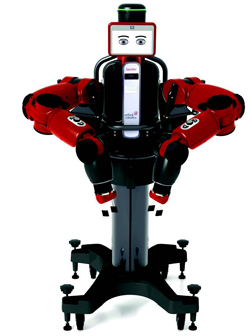
A robot you can ‘teach’ to pack bread
Rodney Brooks has designed a unique robot that is easy to use, comparatively cheap and suitable for even small manufacturing outfits. Baxter can perform repetitive tasks like bread packing, working safely next to people. It exhibits ‘common sense’ and is capable of sensing and adapting to its task and environment. For example, let us say Baxter is assembling a small machine and it loses a part. It will visually scan the desk, pick up the piece and start working again—just like we do. The best part is that it involves no programming or costly integration. It is possible to train the robot by physically moving its limbs and demonstrating how it should work. You can easily update its capabilities through software updates, or create your own capabilities with an easy software development kit.
Inside: Seven degrees of freedom, 8-12 pick-and-place operations per minute, 1m/s arm speed, five built-in cameras, interchangeable end-effectors, force sensing, springs and force control at each joint for free movement and bump detection, behaviour-based intelligence, vision-guided movement, human detection using front camera and 360-degree sonar, navigator and face-like display for human-machine interface (HMI), casters for movement, locking feet for stability. Full specifications and parts list available at www.rethinkrobotics.com
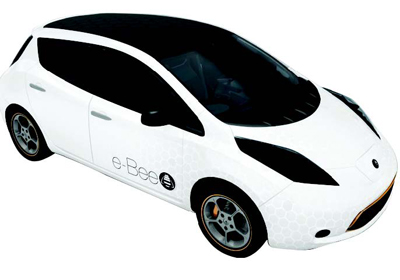
Car of the future
Visteon recently showed off e-Bee—a concept car created using a Nissan Leaf. It has all the automotive electronics you want to see in your car in the future – and if Visteon’s estimate is right, your car might look pretty much like this by 2020. It has everything from entertainment and mobility solutions to safety and comfort.
Inside: Boxes and boxes of electronics, including personalised HMI, touchscreen instrument panels that give information on vehicle controls and social media connections, a head-down projected main display in front of the driver, a rear view with 360-degree visibility and augmented reality features, tech-agnostic wireless charging, Open Source infotainment platform, near-field communications for personal link between the user and vehicle, climate control system, cloud connectivity and car-to-car communications for improved information about collisions, hazardous roads, curve speed warnings, traffic flow and more. Most of the technology is based on an open platform.
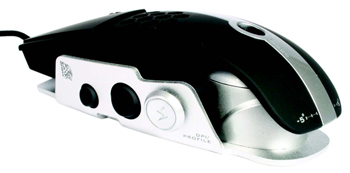
A mouse that fits any palm
BMW Design Works and Thermaltake have together launched the Thermaltake Tt eSports Level 10 M gaming mouse, which can apparently be adjusted to fit to any palm size. It also includes several ergonomic features including a palm-cooling design.
Inside: The mouse features a hollowed-out design that allows height and angle adjustment of the mouse body by simple turning of a screen on the top side of the mouse. A perforated palm surface, advanced materials and unique shape manage to maintain a passive airflow that removes sweat from the palms. The mouse works using a laser sensor with a sensitivity of 8200 dpi, 128kB memory, LED lighting and USB connectivity. It comes bundled with the requisite software.
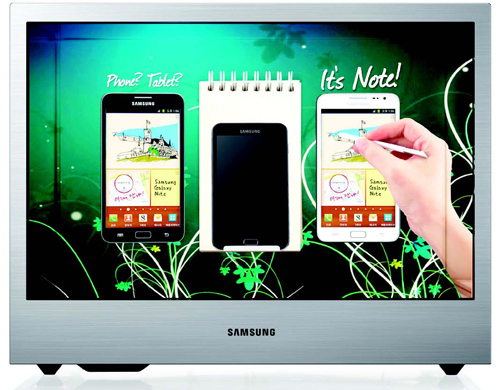
Cubical display for an immersive experience
Samsung’s NL22B is a cube-shaped device that contains a transparent 56cm (22-inch) front-panel display with a computer built into the chassis. It allows images and animations to interact with the products showcased inside the cube. Apart from creating an immersive shopping experience, it could also be used in fields like education and healthcare. It might, for example, be used in a store to allow users to interactively find out more about products and try out various combinations, before making a purchase.
Inside: 60Hz transparent LED display, protective glass, speakers, security lock and cables, USB input and Ethernet connectivity. Built-in AMD A4-3310M dual-core processor allows users to easily control the display, without the need for external PC. Embedded MagicInfo Premium software enables images or videos to be played from a USB source, or deployed and managed from anywhere in the world using a network.
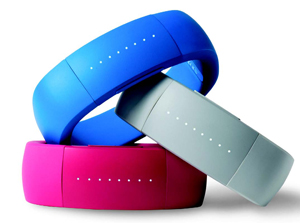
A wristband that tracks your life
Larklife wristbands (one for day and the other for night) track your activity, diet and sleep; analyse the information holistically; and provide personalised recommendations to improve your lifestyle. Larklife provides context-aware advice – for example, if you did not get enough sleep in the night, it will suggest you a protein-rich breakfast to ensure enough energy.
Inside: An intelligent triaxial accelerometer helps pick up even micro-movements of the user’s body, while dietary information needs to be fed into the system. Bluetooth Smart helps synchronise this information with an iOS application on your mobile device. A continuous machine learning algorithm analyses the user’s activity and learns about his energy patterns. The techniques are apparently based on the science of circadian rhythms, or how individuals’ energy levels peak and dip. Lithium-polymer battery provides up to 48-hour working. Other components include micro-USB connector, vibration motor, clock and snazzy LED lights to grab your attention.
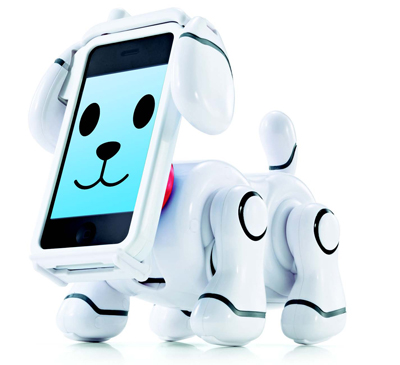
Bandai strengthens its bond with kids
Bandai created magic with Tamagotchi as early as 1996. Its new TechPet robot dog promises to be all the more phenomenal. It starts with a simple, free iTunes application, which lets kids take care of a digital pet. You can feed it, monitor its health, give it medicines, play with it, and do much more. However, the real kick lies in the robot model or toy, whatever you want to call it. Dock your iPhone or iPod Touch as the face of the pet, and it is ready to wag its tail and play with you. The robot toy is capable of walking front and back, turning 360-degree and dancing.
Inside: This application-based toy works with an iPhone or iPod touch docked to the robot dog through a 3.5mm jack. iPhone’s Facetime camera allows voice and gesture control. Bluetooth lets the robot interact and play with other TechPets. The robot dog is powered by three AA-size batteries.

Making electricity safe and smart
Canadian company 2D2C, which makes electrical safety equipment, has launched the SafePlug energy manager kit that adds intelligence to normal power sockets. The outlets provide child safety and surge protection, monitor power consumption of devices connected to them, automatically switch off devices not in use, and also enable remote control of the outlet. Overall, the system promises 30 per cent savings in electricity bills.
Inside: The kit comprises SafePlug energy manager outlets, a server, an application that can run on most mobile devices and Web browsers, and SafePlug Upgrade tags. The server and outlets communicate wirelessly using Zigbee Pro—a low-power networking technology that enables the devices to connect to each other and ultimately form a mesh network. The server can, in turn, connect to the device that runs the application using Ethernet or Wi-Fi. Outlets contain patented overload, shock and power fault circuit interrupter technologies. SafePlug Upgrade tags communicate appliance power and current rating to outlets. There are around 13 tags available, and for an appliance to receive power from an outlet, it must be updated by adding the tag that best matches its power or current rating.
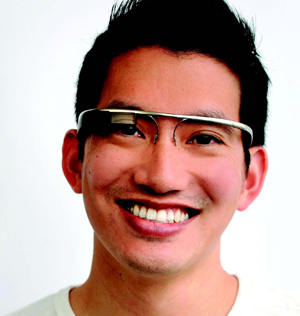
Google’s shot at wearable computing
Google Glass is a computer-integrated pair of glasses that realises augmented reality. That is, it supplements what you see with relevant information. If you are walking down a street, it could pop up information on the buildings there, notify you of a traffic diversion or suggest a restaurant – somewhat like today’s location-aware phones can. It is likely to be launched around 2014, but has already gained a lot of attention.
Inside: Glass is likely to include a heads-up display; standalone processor; on-board memory and battery; projection technique such as the Lumus optical engine module; a 3.2MP camera and 1080p video recording; touch pad, microphone and speakers for input-output; sensors like gyroscope, accelerometer and magnetometer (e-compass) for context-sensitivity and gesture-enabled interaction; GPS functionality; and 3G/4G, Wi-Fi and Bluetooth connectivity. It is proposed to run on Android. Although the early prototype uses an opaque screen, the actual might use a transparent liquid-crystal display or active-matrix organic light-emitting diode display.
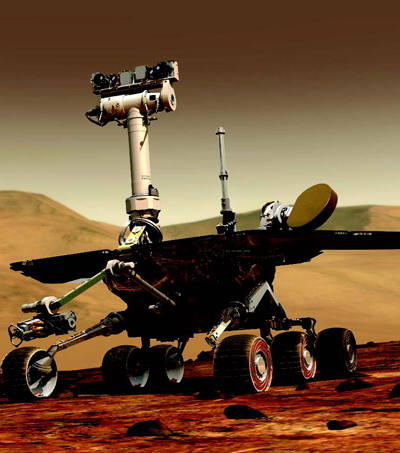
NASA’s best Martian bet
NASA’s Curiosity is the largest rover sent to Mars. The car-sized rover apparently contains much more scientific instrumentation than other rovers sent to the Red Planet. According to NASA’s Mars Lab, the rover has everything that a living thing needs to breathe, live and work.
Inside: The rover’s body is a structure that protects the stuff inside. Computers are its brain, and temperature is controlled through internal heaters, a layer of insulation and more. The rover’s neck and head serve as a mast for the cameras to give the rover a humanscale view; the cameras and instruments are its eyes and senses. It has robotic arms and hands to collect material samples for study, wheels and legs for mobility, batteries for energy, and ultra-high frequency antennae to communicate! One of the two computers inside the rover works all the time, while the other serves as backup. Both use radiation-hardened BAE RAD750 microchips operating at up to 200 MHz. Each computer is equipped with 2GB flash memory, 256MB random-access memory and 256kB erasable programmable read-only memory. While this configuration seems much lower than today’s computers, these chips are used because they are radiation hardened, through a very high-tech and costly process to stand the rigours of a strange planet.








